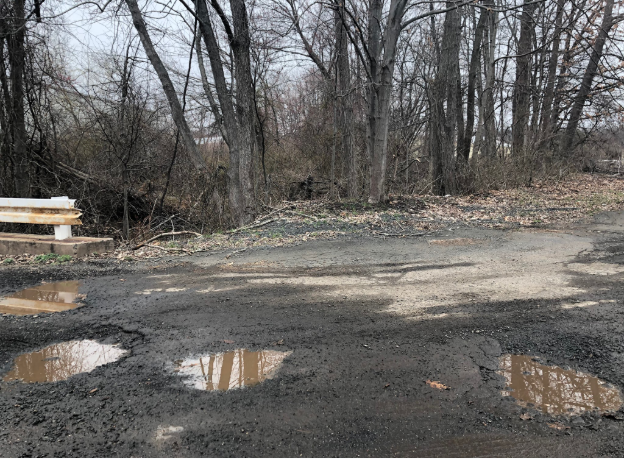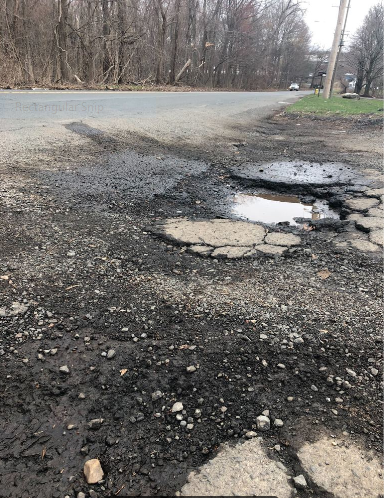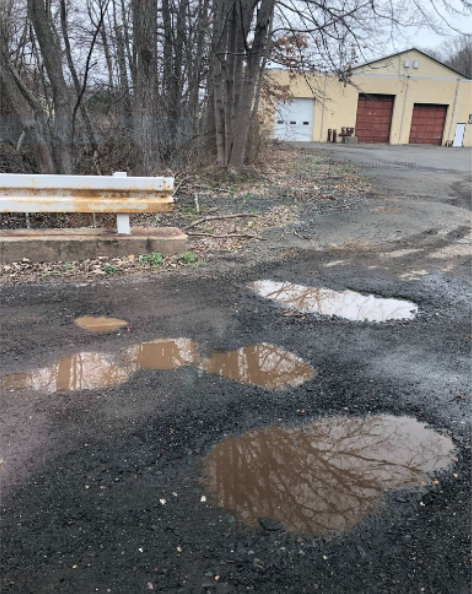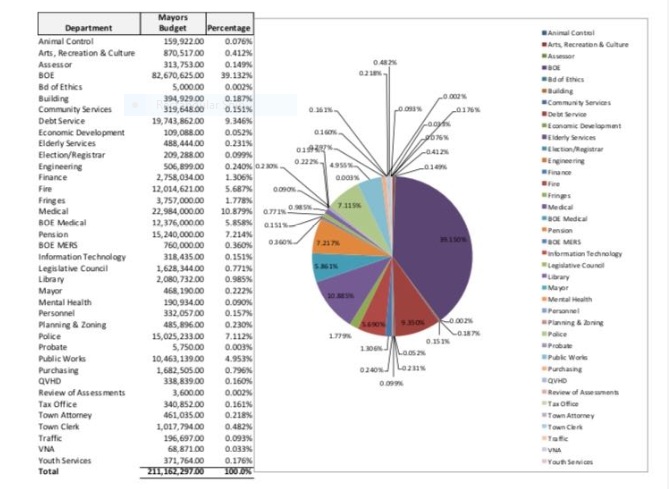
Potholes just off of Sherman Avenue
Photo by Kristina Mendoza-Cabrera
Dodging, weaving, and swerving left and right. This isn’t the description of race car drivers approaching their final lap on the track– it’s one of Quinnipiac students driving along Mount Carmel Avenue trying to make it to class in one piece. The obstacle in their way? Potholes, which only seem to grow in size and number at the end of every winter.
Superintendent of Streets for Hamden’s Public Works Department Joseph Longobardi said that while potholes are a year-long problem, they occur more frequently during the late winter into spring, due to the change in weather.
“During the winter you have the rain and then it freezes, and it tends to pop the asphalt. That’s when the potholes occur and the complaints start coming in,” Longobardi said. “We’re filling them (the potholes) from then all the way to the fall.”
There are two trucks that maintain approximately 228 miles of road, one in the north end of town and one in the south. With these two vehicles, the public works department has filled 322 potholes from Jan. 3 to April 4 of this year.
The process of filling and refilling these road hazards is a long one and it depends on weather conditions as well as the availability of materials.
While the pothole is preferably filled with hot asphalt mix, which has long-lasting properties, it is often not available in the colder months. If this is the case, as it is in Hamden, repairs are made with other materials like cold patch, a mixture of stone and oil, and then revisited in warmer months.
Longobardi said the department uses the cold patch to maintain the roads for the winter while the asphalt plants are closed. When the plants reopen at the end of May, they can begin using the hot asphalt as a more permanent patch.
Constant maintenance of the roads is not enough to keep the complaints at bay. In fact, they’re a daily occurrence. There are currently 136 pothole reports on SeeClickFix. Yesterday, that number was 122.
“I normally drive pretty fast, but that’s all changed since coming to school here,” Quinnipiac junior Jaysa Quinlivan said. “I feel like I have to be so careful to avoid the huge potholes.”
Sometimes, the consequences are more than a little jostling.
“I’ve messed up my car severely– my bumper was all scratched up,” Quinnipiac senior and New Road resident Sarah Foley said. “There are times when I’ve considered walking to school.”
And while the list of complaints is never-ending, the current resources for attending to the issue only go so far.
“There are many roads that we do need to pave, but it’s the budget,” Longobardi said. “The budget and money is the concern.”
Records of the Town of Hamden show the budget for the entire public works department– not just the sector that works on pothole repair– is approximately $10.4 million, or 4.9 percent of the overall budget. For comparison, the Board of Education receives $82.7 million and makes up 39 percent of the budget. Debt services which make-up 9.3 percent of the budget, get $19.7 million, according to the Town of Hamden’s “Citizen’s Guide to the Budget.”
Still, the public works department works with what it has. Along with roads like Todd Street, Shepard Street and Sherman Avenue, the department has been filling potholes along Mount Carmel Avenue since March. The back roads from Quinnipiac’s main campus to the North Haven campus are especially ravaged.
“The back roads leading from Mount Carmel to Hartford Turnpike? We were on that for a week and a half,” Longobardi said. “We laid 20 tons of asphalt on that and it didn’t even make a dent.”
This is particularly bad news for students like Quinnipiac senior Erin Redding, who has classes in North Haven twice a week. The 15-minute commute is one she dreads.
“It’s a horrible road. The potholes are just unavoidable because there’s so many,” Redding said. “I feel like I’m ruining my car every time I drive there, but I don’t have a choice.”
And it’s not only students who are exasperated. Hamden resident James Wise, a mechanic at Firestone Complete Auto Care, says he can’t even count the number of cars he’s seen this month that have tire damage due to potholes.
“A lot of people have been coming in with their tires busted,” Wise said. “We’ve had quite a few people coming in and complaining about potholes here.”
One of those people was his aunt, Valerie Harold, who lives on West Side Drive and busted her tire after hitting a pothole.
“It was crazy,” Wise said. “I had to replace her lower control arm and everything underneath after the whole wheel fell out.”
Nick Froso, another mechanic at Firestone Complete Auto Care, spoke to the cost of repair for tire damage.
“Immediately it’s like $175 just for a mechanic to look at it. A new rim costs an average of $400 to $500 apiece,” Froso said. “Depending on the car, it’s anywhere from that price and the sky’s the limit.”
The same cannot be said for what’s to be done about Hamden’s potholes. With an insufficient budget, there is only so much the department can do for road repair. Most of the efforts seem to go toward preventing the damage from growing worse.
For those like Longobardi, the constant filling and refilling of potholes using cold and hot patch feels like an ongoing battle.
“It doesn’t seem like a lot, but we do what we can for now and hope it holds over,” Longobardi said.



